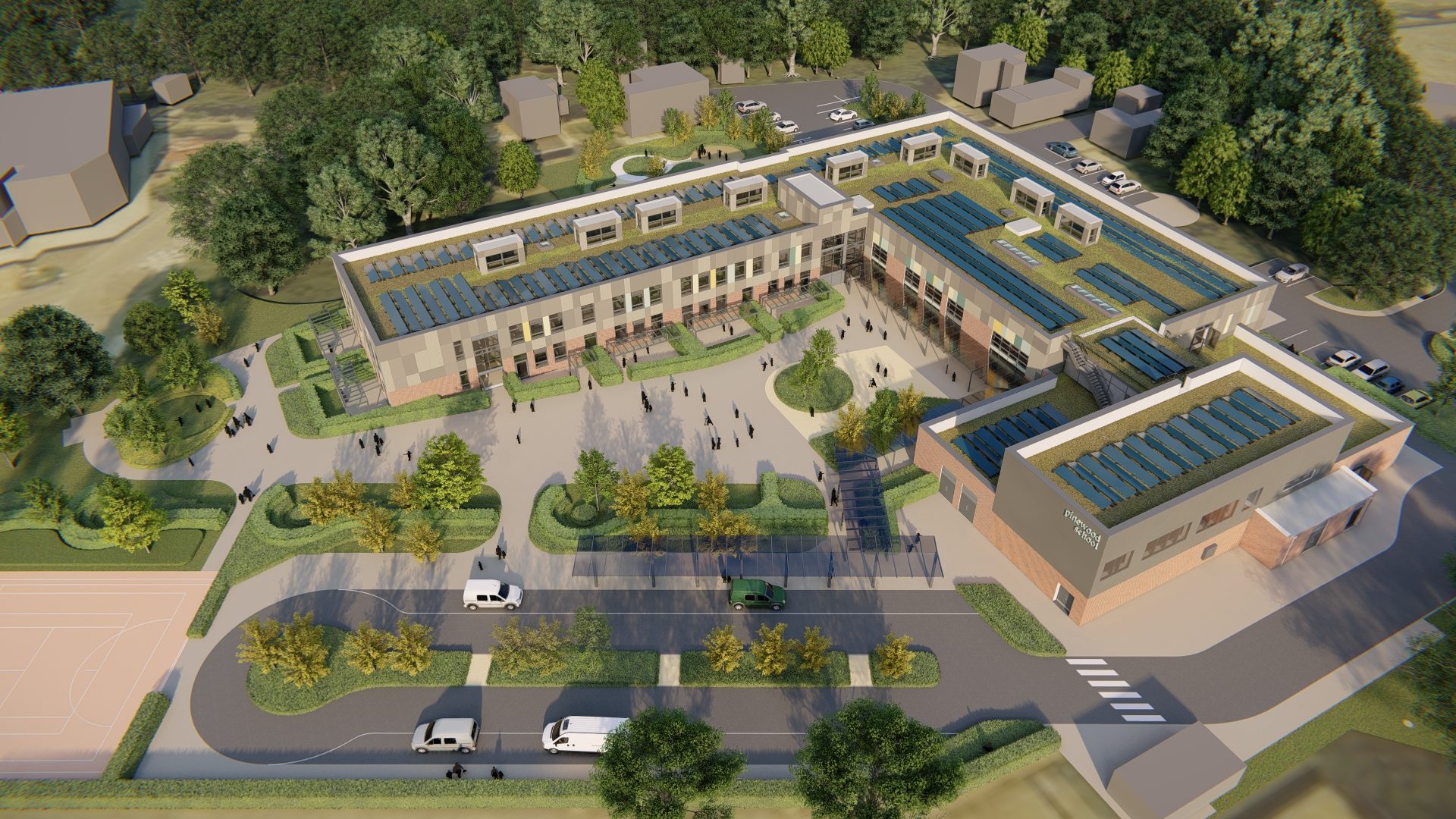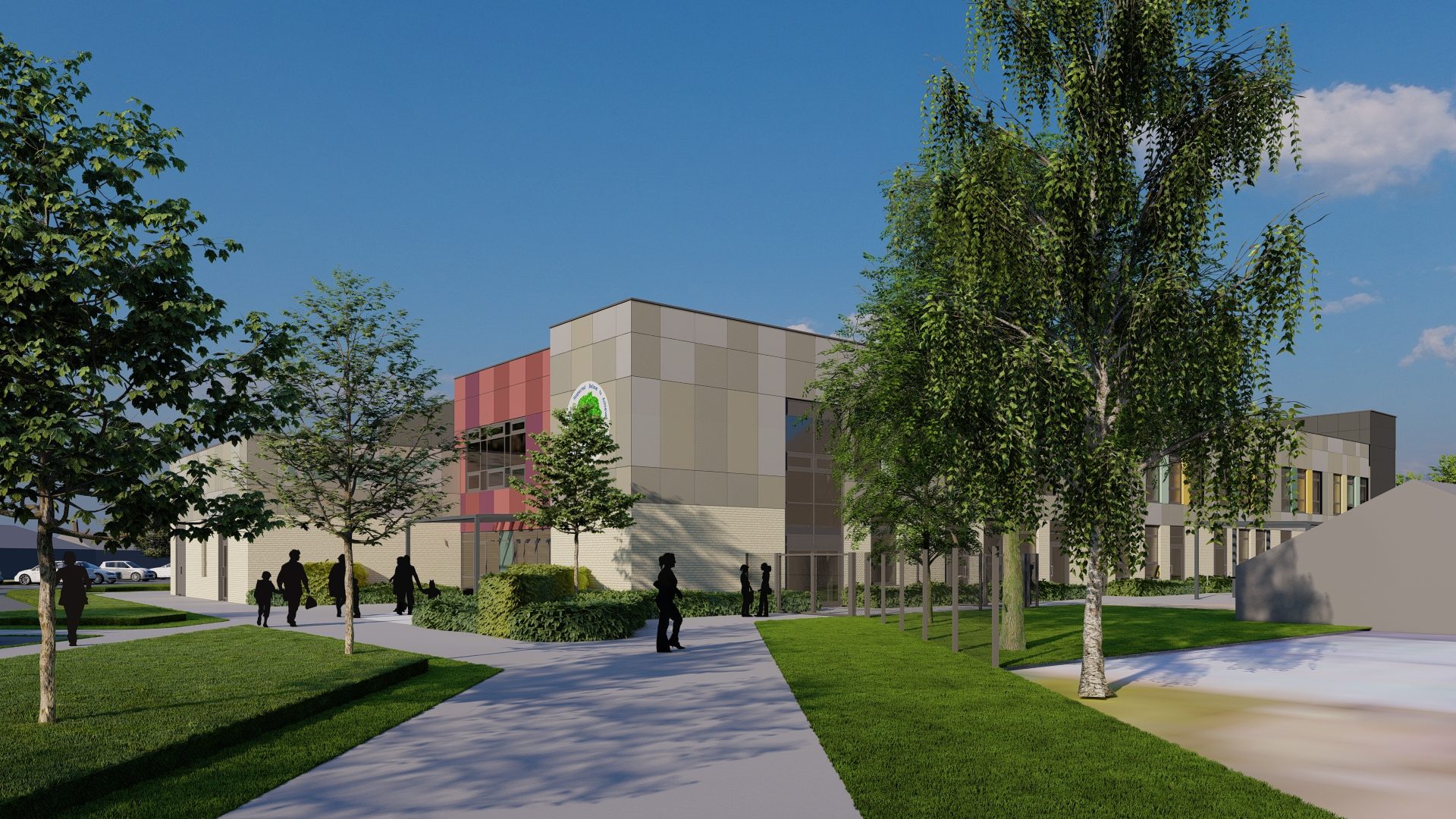
21 Nov 2025
We're catching up with Luke Williams, who has recently been promoted to Digital Delivery Manager - a new and significant role within CPMG.
Luke shares insights into his journey, how his position has evolved, and how digital innovation is shaping the future of design delivery across the practice.
Can you tell us a bit about your journey into architecture and how you first joined CPMG?
My journey into architecture was a bit of chance, to be honest. I’ve always been drawn to the technical side of things and originally trained in the mechanical engineering sector. I first heard about architectural technology through a friend, which really piqued my interest, and within a few weeks I’d applied to the Architectural Technology course at NTU.
After completing my undergraduate degree, I went on to study a master’s in Digital Architecture and Construction and that’s really where my understanding and passion for BIM developed. During the degree show, while nearing the end of my MSc, I spoke with Richard Flisher about my studies and ambitions. A few weeks later, I received an email about a new role CPMG wanted to introduce in the form of a BIM Support Technician. As they say, the rest is history.
When I joined CPMG just over three years ago, it was with the goal of developing my digital delivery skillset within a collaborative practice. Over time, I’ve had the opportunity to work on a range of projects that really highlight how technology and a coordinated BIM process can improve both efficiency and design quality.
You’ve recently stepped into the new role of Digital Delivery Manager - what does that mean to you?
It is an exciting step because it formalises something I have been passionate about for a long time. Using digital tools and workflows to make design delivery smarter, clearer, and more consistent. Personally, it is incredibly rewarding to be trusted with helping shape how CPMG adopts and refines these processes across the practice.
Professionally, it is about ensuring that our teams have the tools, standards, and guidance they need to deliver design with precision and confidence. It also means supporting our people, helping them feel comfortable with evolving technology, and making sure that digital innovation enhances their work rather than complicates it. For me, success in this role is not just about new software or systems. It is about empowering people to deliver their best work through the right digital processes.
How has your role evolved since you first joined CPMG, and what’s driven that progression?
When I first started at CPMG, my focus was more on project level BIM coordination and model management. It was a new role at the time, so there was a lot of freedom to explore what it could become and how it could best support the practice.
Over time, that evolved into a much broader role around digital strategy. I now work with our BIM Manager, Ady, to develop Revit standards, improve workflows, support training, and explore emerging technologies that genuinely add value. The progression has been driven by curiosity and by CPMG’s shared ambition to continually improve how we deliver design.
For those who might not be familiar, how would you describe what digital delivery involves and why it’s important in architecture today?
At its core, digital delivery is about managing and quantifying information throughout the design and construction process. It ensures that everything from concept to completion is coordinated, accurate, and tangible.
It is becoming increasingly important because projects today are far more complex, and clients expect greater detail, transparency, and collaboration. Digital delivery gives us that control. It allows teams to work efficiently, share information seamlessly, and deliver the highest standard of technical information with confidence.
What excites you most about digital delivery and the possibilities it brings to CPMG’s design process?
What excites me most is how it allows creativity and efficiency to coexist. Digital tools do not replace design, they enhance it. They let us test ideas faster, collaborate more effectively, and produce information that’s technically robust.
Its exciting to see how our approach continues to evolve. Every project teaches us something new, and seeing our team and wider design collaborators adopt new workflows and instantly see the benefits is hugely rewarding.

Can you share a project where digital delivery or BIM made a real difference in collaboration or outcomes?
It’s difficult to choose just one because every project has its own challenges and rewards. However, the first two I worked on, Pinewood School and Southglade School, will always stand out. They were the projects where I first started applying the theory from university to live, collaborative work.
Working closely with Ady and the project delivery teams helped me understand how all the digital processes tie together. We implemented a robust approach early on, coordinating across the design team and ensuring that models and information aligned with client standards. It made a huge difference by reducing rework, improving communication, and strengthening the quality of information we delivered.
How do you work with architects, technologists, and clients to integrate digital processes into design and delivery?
It’s a very collaborative process. I work closely with our project teams, both architects and technologists, to understand project-specific workflows and tailor our digital delivery approach to suit.
With clients, Ady and I work directly with their appointed Information Managers to understand expectations, deliverables, and data requirements. We have spent a lot of time refining our internal workflows to make sure our approach fully supports our clients’ needs while maintaining flexibility for different project scales and sectors.

As technology continues to evolve, how do you see digital delivery shaping the future of architecture - both at CPMG and across the industry?
The architecture and construction industry is evolving at an incredible pace. Seeing how BIM and digital collaboration have developed even over the few years I have been in the industry is both daunting and exciting.
I think digital delivery will continue to push architecture towards being more data-driven, connected, and sustainable. At CPMG, we are already seeing the benefits of linking models, data, and documentation into a unified process. Looking forward, I see even greater integration between design, construction, and operation where our digital models become living assets that add long-term value for clients and the people who use the buildings we create.
What advice would you give to someone interested in pursuing a digital or BIM-focused career in architecture?
Always stay curious and keep learning. The technology moves quickly, but understanding the principles behind how projects come together is just as important as mastering the software.
I’ve been lucky to be part of a practice that embraces change and innovation, and I’ve had incredible support from colleagues like Ady and the wider project delivery teams. Their experience and willingness to share knowledge have shaped my development and given me the confidence to push things forward. Having that support network around you makes all the difference.
Outside of work, is there anything that inspires your approach to innovation and technology in design?
Definitely. I’ve never really thought about it until now, but I’ve always been fascinated by how things are built and engineered, and that curiosity carries over into pretty much everything I do. I’m a lifelong motorsport fan and really enjoy researching the technical side of the sport and how engineering decisions shape performance. I spend a lot of my spare time building guitars and experimenting with new design ideas, which gives me another creative outlet to work through complex problems in a hands-on way.
I also enjoy astrophotography and astronomy, which can be a technical nightmare if you know the ins and outs of how it’s done. It demands patience, precision, and planning, which I find oddly satisfying. All of these hobbies, in one way or another, are about process, precision, and problem-solving. That naturally feeds back into my approach to design and digital innovation. It’s all about combining creativity with technical understanding to achieve something unique.
Luke’s forward-thinking approach and commitment to innovation continue to strengthen CPMG’s digital capability, helping our teams collaborate more effectively and deliver projects with clarity, accuracy, and creativity. His progression into the role of Digital Delivery Manager reflects both his passion and his impact - and we’re excited to see how his leadership will further advance our digital delivery approach in the years ahead.